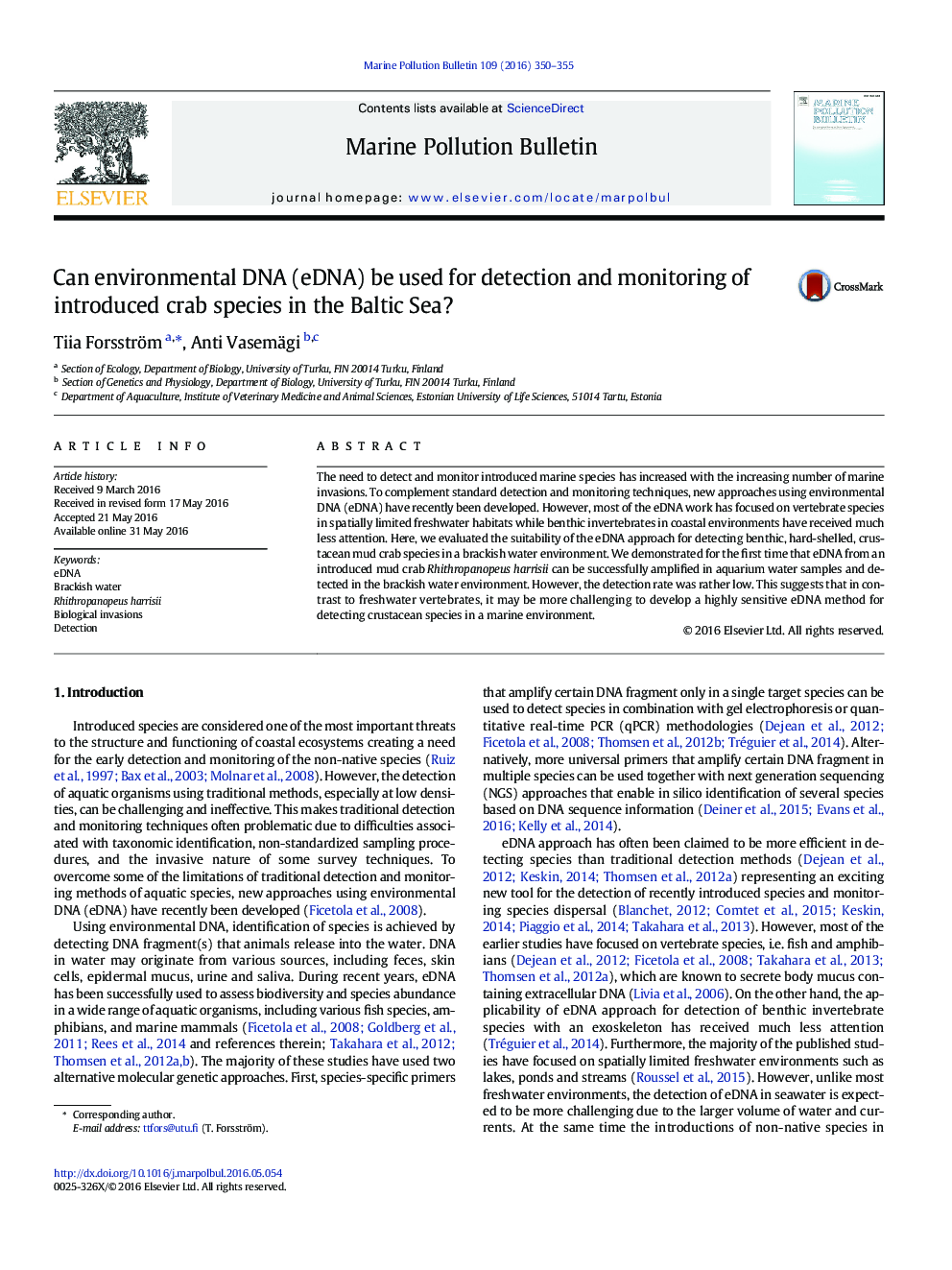| کد مقاله | کد نشریه | سال انتشار | مقاله انگلیسی | نسخه تمام متن |
|---|---|---|---|---|
| 4476410 | 1315594 | 2016 | 6 صفحه PDF | دانلود رایگان |
• We tested the suitability of eDNA approach for detecting benthic mud crab species.
• We demonstrated that an introduced R. harrisii can be detected using eDNA.
• The method is not as sensitive with benthic crab as with fish and amphibian species.
The need to detect and monitor introduced marine species has increased with the increasing number of marine invasions. To complement standard detection and monitoring techniques, new approaches using environmental DNA (eDNA) have recently been developed. However, most of the eDNA work has focused on vertebrate species in spatially limited freshwater habitats while benthic invertebrates in coastal environments have received much less attention. Here, we evaluated the suitability of the eDNA approach for detecting benthic, hard-shelled, crustacean mud crab species in a brackish water environment. We demonstrated for the first time that eDNA from an introduced mud crab Rhithropanopeus harrisii can be successfully amplified in aquarium water samples and detected in the brackish water environment. However, the detection rate was rather low. This suggests that in contrast to freshwater vertebrates, it may be more challenging to develop a highly sensitive eDNA method for detecting crustacean species in a marine environment.
Journal: Marine Pollution Bulletin - Volume 109, Issue 1, 15 August 2016, Pages 350–355
